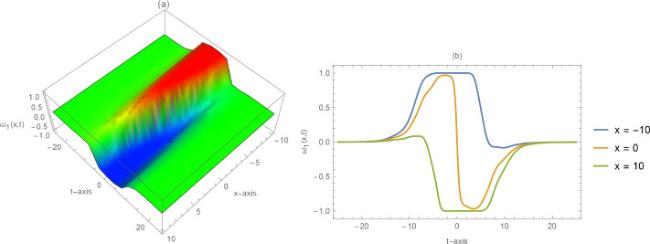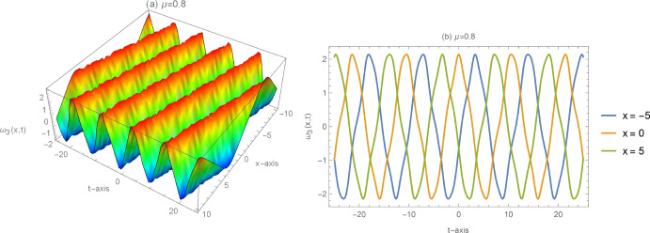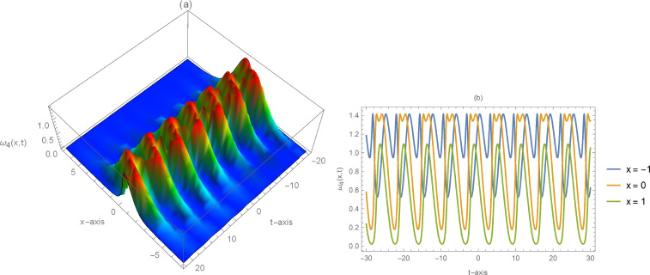Nonlinear evolution equation is a research hotspot in different fields of science and engineering especially in energy and material science topics
[1],
[2],
[3],
[4],
[5],
[6],
[7],
[8],
[9],
[10],
[11],
[12],
[13],
[14]. No doubt experts have made remarkable achievements in these fields. So far, a variety of analytical and numerical schemes have been introduced to analyze and solve nonlinear evolution equations (NLEEs), the most typical of which include the unified method and its generalized form
[15],
[16], the tanh-coth-expansion and sine-cosine-function methods
[17],
[18], the
-expansion method
[19],
[20],
[21], sine-Gordon expansion method
[22],
[23], the modified Kudryashov method
[24],
[25],
[26], the Hirota bilinear method
[27],
[28],
[29],
[30],
[31], the finite difference method
[32], the Riccati equation technique
[33], the modified reproducing kernel discretization technique
[34], the long wave limit method
[35], the cubic B-spline scheme
[36], the
q-homotopy analysis
[37] and the bilinear neural network method
[38],
[39],
[40],
[41]. In this research, we examine the dynamical behavior of a minor element achieved through the phase decomposition of the main element in a binary alloy which is completely described by the Cahn-Hilliard (CH) system
[42],
[43] via the unified method
[44],
[45],
[46]. To this end, many exact solutions are created for this model and the physical meanings for the obtained solutions are illustrated by two- and three-dimensional figures and their contour plots.







